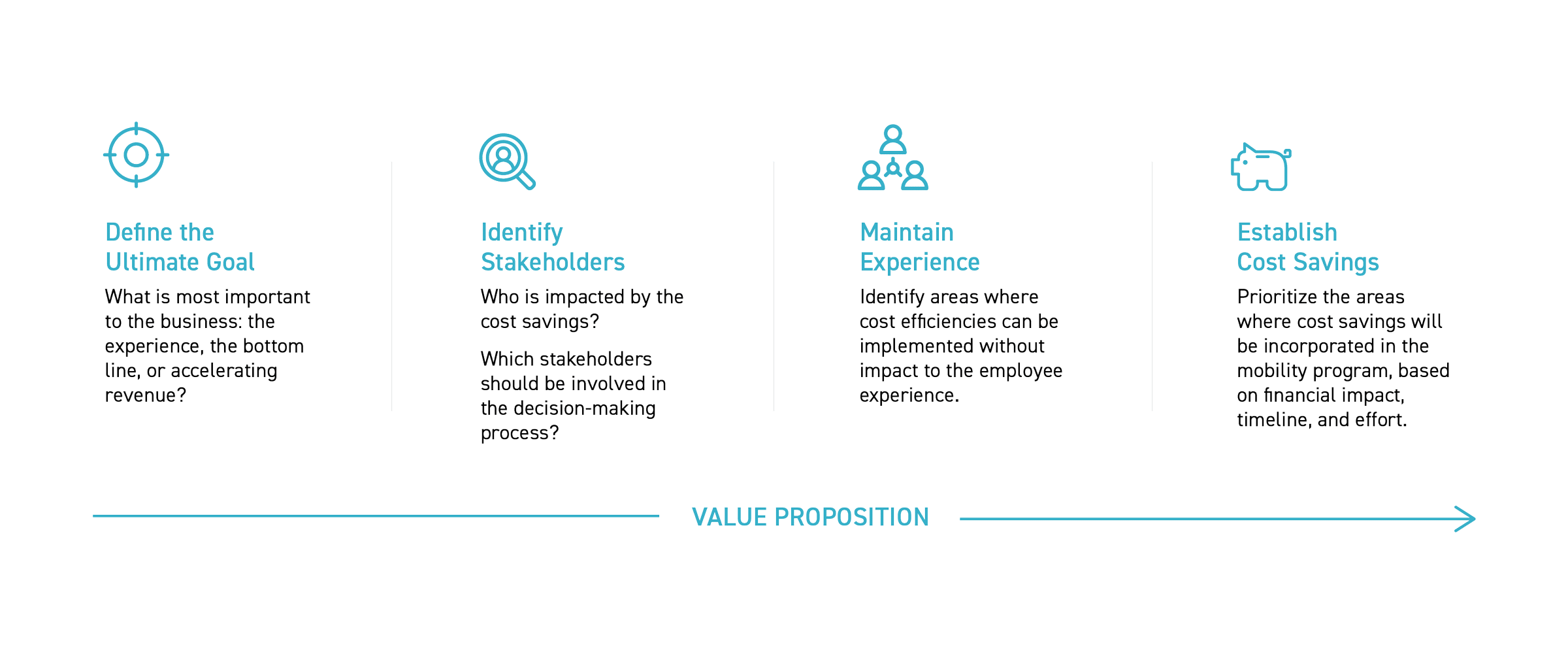Event recap: insideMOBILITY® Charleston | April 3-4, 2023
Strategies for the new horizon of mobility
Explore innovative solutions as companies continue to rethink their mobility strategies. Here’s a snapshot of the covered material to help you navigate the new horizon of mobility.

1. Just Be Undeniable: The art and science of goal achievement

Stephen Childs, CHRO of Panasonic Automotive
Forbes contributor, Executive Coach, 2x HR Executive of the Year
“Put yourself in a position of knowledge, competencies, behaviors, skills, and desire for which there will be no other outcome than success.”
Goal Planning is Challenging Work
Priorities
Outline the desired changes
Habits
Create change with new habits
Systems
Help cement new habits
2. Mobility Process Mapping Tool: The why and the what
The principles that guide the decisions as to WHY mobility should be offered
|
|
|
WHAT Evaluation criteria are needed to determine support levels
|
|
|
There are a few ways to create the tool; the key is to establish consistency.
- Get stakeholder input; varies between business unit, talent acquisition/recruiting, HR, etc.
- Establish the key evaluation criteria from that input
- Understand how each stakeholder values the key criteria—identify areas of commonalities and differences
- Align relocation policy to the Mobility Process Mapping Tool
Mobility Process Mapping Tool

3. The Cost of Mobility: Prioritizing people while optimizing efficiency
Cost Savings
This exercise will provide solutions to reduce cost and/or accelerate revenue in your mobility program while maintaining an elevated employee experience and expressing the company culture and brand.

4. Post Pandemic and the Need for Crisis Management

The global pandemic required mobility professionals to elevate their strategy to address a variety of complex situations.


How to Create a Crisis Plan:
- Hold an expertly facilitated stakeholder session to discuss possible crisis scenarios
- Perform Risk Assessment: personal security, intellectual property preservation, data security, communications and technology solutions in a crisis mode
- Develop remote response options
- Get legal and tax advice on all remote response options
- Test your response system annually
Global Risks Assessment Survey
Consider the worldwide issues that impact a mobility strategy today:
|
|
WEF Global Risk Survey 2023




